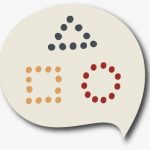My career as a Speech Therapist spans over 21 years. I am from Cyprus and graduated from the University of Patra, Greece, with a Bachelor’s degree in Speech and Language Therapy.
I have worked with children in private clinics, mainstream schools, and provided home-based support in Cyprus and Singapore.
As a speech and language therapist, I combine academic studies, evidence-based practice, and years of experience to form unique relationships with my clients, their families, and wider support systems.
I specialize in working with children who have language difficulties, late talkers, articulation challenges, kids with global developmental delay, autism spectrum disorder, Down syndrome, and other syndromes.
I am a member of the Speech and Language Association in Singapore and continuously update my knowledge by attending the latest courses and related seminars around the globe. I use the latest techniques and approaches to tailor therapy sessions to meet the individual needs of each child, enhancing and maximizing their communication skills based on the severity of the problem.
Throughout my years of experience and continuous learning, I have developed the ability to accurately assess each child’s needs and provide appropriate therapy to help them regain independence, communicate effectively, and resume their daily activities.
I see my job as supporting you and creating the best therapist for your child.

